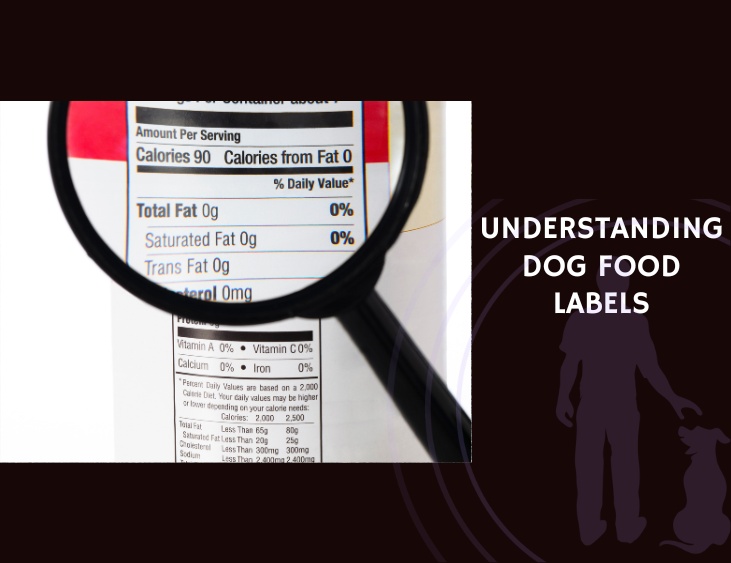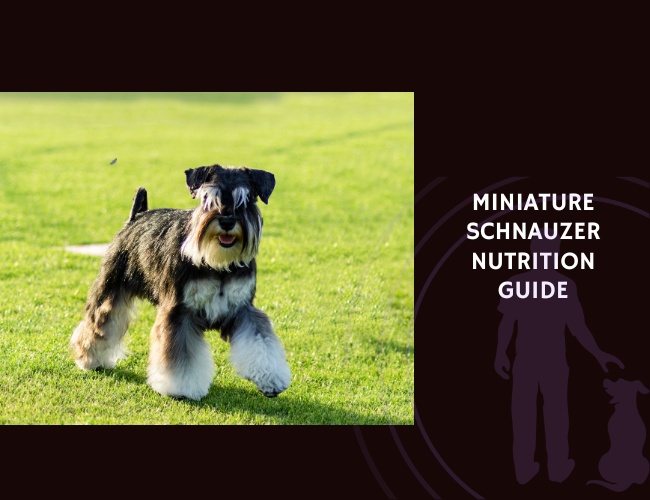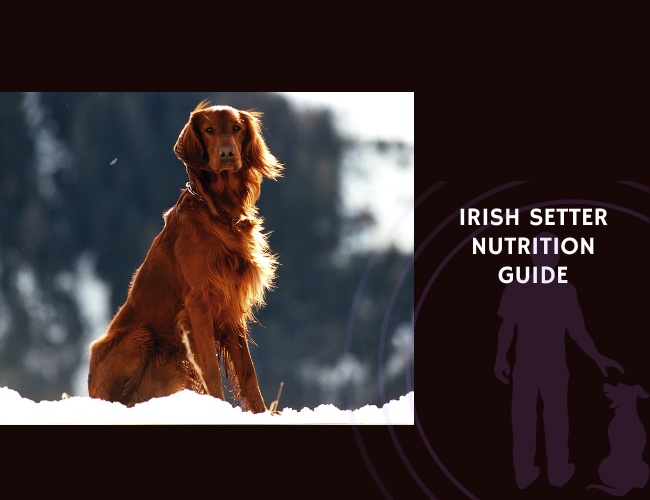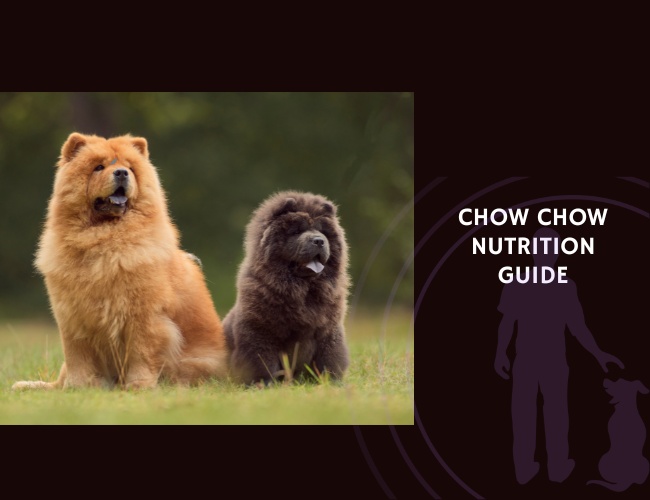Introduction to Dog Food Labels
The Vital Role of Dog Food Labels in Pet Nutrition and Health
Dog food labels play a crucial role in ensuring that your pet receives balanced and nutritious meals. They provide essential information on ingredients, nutritional content, and the quality of the product. By understanding these labels, pet owners can make informed choices that positively impact their dog’s health, energy levels, and overall well-being. Correct and accurate labeling helps you select food that supports everything from healthy growth and shiny coats to better digestion and longevity.
Why Understanding Dog Food Labels Is Essential for Responsible Pet Ownership
Understanding dog food labels is a vital aspect of responsible pet ownership. By decoding these labels, you can:
- Avoid substances that might cause allergies or health issues in your pet.
- Ensure your dog is receiving a balanced diet that meets their specific nutritional needs.
- Make better purchasing decisions, not based solely on marketing but on solid nutritional data.
- Recognize and avoid low-quality products that may harm your dog’s health over time.
When you comprehend the details presented on food labels, you actively contribute to the long-term health and happiness of your dog.
Overview of Regulatory Bodies and Standards in Dog Food Labeling
Dog food labeling is governed by a set of comprehensive rules designed to ensure transparency and safety in pet nutrition. The Association of American Feed Control Officials (AAFCO) and the Food and Drug Administration (FDA) play pivotal roles in establishing these guidelines. AAFCO provides model regulations that many states adopt, ensuring that dog food labels meet specific nutritional standards. These labels must include a statement of identity, net quantity of contents, ingredient list, guaranteed analysis, nutritional adequacy statement, and feeding instructions. Additionally, the name and address of the manufacturer or distributor must be present on the label.
The ingredient list is particularly crucial, as it must display all components in descending order by weight. This transparency allows pet owners to assess the quality of the food based on its primary ingredients. Furthermore, the guaranteed analysis section provides essential information about the minimum percentages of crude protein and fat, and the maximum percentages of crude fiber and moisture. This data helps pet owners determine if the food meets their dog’s dietary needs.
Recent updates in dog food labeling practices have introduced new requirements, such as the inclusion of a “Nutrition Facts” box similar to human food labels. This change aims to provide clearer nutritional information, making it easier for pet owners to compare products. Understanding these rules and updates is vital for responsible pet ownership, as it empowers you to make informed decisions that support your dog’s health and well-being.
Dog food labels are regulated by several authoritative bodies to maintain high standards of quality and transparency. These regulatory bodies include:
- The Association of American Feed Control Officials (AAFCO): AAFCO sets the standard nutritional requirements for dog foods. They ensure that pet foods meet the minimum nutritional needs by providing guidelines for producers to follow. Compliance with AAFCO’s standards is an indicator that the food provides complete and balanced nutrition.
- The Food and Drug Administration (FDA): The FDA regulates pet food labeling and ensures that products are safe, properly manufactured, and accurately labeled.
- State Departments of Agriculture: State agencies often follow AAFCO guidelines but may have additional regulations to ensure that dog food sold within their jurisdictions is safe and labeled correctly.
These bodies help maintain consistency and transparency, making it easier for pet owners to trust and decipher dog food labels. Proper regulations ensure that labels provide genuine and useful information, helping you choose the best possible nutrition for your dog.
Understanding dog food labels can seem daunting at first, but it is an indispensable skill for any conscientious pet owner. By familiarizing yourself with the vital role of these labels and the standards they must meet, you can confidently select foods that cater to your dog’s specific dietary requirements and health needs. As we delve deeper into dog food labels, we’ll explore their key components and how to decode ingredient lists effectively.
Key Components of Dog Food Labels
Understanding the key components of dog food labels is essential for responsible pet ownership. The information provided on these labels helps pet owners make informed choices about their pet’s diet and ensure that their nutritional needs are met. Let’s delve into the details of these components.
Detailed Breakdown of Ingredient Lists and Their Order of Importance
One of the primary aspects of a dog food label is the ingredient list. Ingredients are listed in descending order by weight, meaning that the first few ingredients make up the bulk of the food. It’s essential to focus on the first five ingredients to get a sense of the product’s quality. High-quality dog foods often list meat or meat meal (such as chicken, beef, or lamb) as the first ingredient.
Grains like corn or wheat, and by-products, which can be less desirable, might appear lower on the list in higher-quality foods.
Understanding the Guaranteed Analysis Section and Nutritional Percentages
The guaranteed analysis section provides the minimum and maximum levels of nutrients in the dog food. Typically, it includes:
- Crude Protein: Indicates the minimum percentage of protein.
- Crude Fat: Shows the minimum percentage of fat.
- Crude Fiber: States the maximum percentage of fiber.
- Moisture: Indicates the maximum percentage of moisture.
Understanding these percentages helps in determining the food’s nutritional value and suitability for your dog. For instance, high protein and fat contents are often suitable for active or growing dogs, while lower contents might be better for older or less active ones.
Interpreting Nutritional Adequacy Statements and AAFCO Standards
Nutritional adequacy statements are critical in assessing whether a dog food product meets a dog’s dietary needs. These statements are based on the guidelines set by the Association of American Feed Control Officials (AAFCO). An example of such a statement might be: “Formulated to meet the nutritional levels established by the AAFCO Dog Food Nutrient Profiles for maintenance.”
These AAFCO standards are vital as they ensure the dog food provides balanced and complete nutrition for different life stages:
- Growth: Puppies need higher nutrients and calories.
- Maintenance: For adult dogs to maintain their healthy weight and condition.
- All Life Stages: Suitable for both puppies and adults but must meet the more stringent requirements of growth and reproduction.
Pet owners should look for these statements on dog food labels to ensure that the product adheres to the recommended standards.
As you delve into understanding every detail on dog food labels, you become more capable of choosing foods that cater to your dog’s nutritional needs and well-being. Be prepared to evaluate diverse ingredients and nutritional percentages in the search for the optimal diet for your furry companion.
Decoding Ingredient Lists

How to Identify High-Quality Protein Sources
The ingredient list is the first place to look when evaluating dog food. One of the most important aspects is identifying high-quality protein sources. Protein is essential for your dog’s muscle development and overall health. High-quality proteins come from named meat sources such as chicken, beef, lamb, or fish. These ingredients should appear near the top of the ingredient list.
Meat meals, such as chicken meal or lamb meal, are also good protein sources. They are made by rendering meat to remove water content, making them more concentrated in protein than fresh meat. However, vague terms like “meat by-products” or “animal meal” should be avoided; they often contain a mix of lower-quality protein sources.
Understanding the Significance of the First Five Ingredients
The first five ingredients on a dog food label play a crucial role in determining the food’s quality. These ingredients make up the bulk of the food and set the nutritional tone.
- Named Meat Source: Ideally, a high-quality food will list a specific type of meat as the first ingredient.
- Secondary Protein Source: This could be another type of meat or a meat meal.
- Grains or Vegetables: These provide carbohydrates and fiber. Whole grains like brown rice or oats are preferable over more processed forms like cornmeal.
- Fats and Oils: Named sources like chicken fat or fish oil are better for providing essential fatty acids compared to generic “animal fat.”
- Additional Vegetables: Ingredients such as sweet potatoes, carrots, and peas provide vitamins, minerals, and fiber.
Evaluating Different Types of Ingredients and Their Nutritional Value
Understanding the nutritional value of various ingredients can help you make informed decisions.
- Meat and Meat Meals: As mentioned, these are excellent sources of protein. Ensure they are named sources.
- Whole Grains: Brown rice, barley, and oatmeal are nutritious and easier for dogs to digest. Avoid corn and wheat, which can be common allergens.
- Vegetables and Fruits: Ingredients like spinach, blueberries, and apples add essential vitamins and antioxidants. They should complement the primary protein source.
- Fats and Oils: Look for named sources like salmon oil or flaxseed oil, which are rich in Omega-3 and Omega-6 fatty acids.
- Additives and Supplements: Vitamins, minerals, and probiotics may be listed and contribute to a balanced diet. Ensure these are listed towards the end of the ingredient list.
By closely examining these components, you can ensure your dog receives high-quality nutrition. As you become more familiar with reading dog food labels, making informed choices will become second nature.
Understanding the ingredient list is just one part of selecting the best food for your dog. Equally important is verifying the nutritional adequacy and guaranteed analysis provided by manufacturers.
Common Marketing Terms and Claims
Differentiating Between Regulated and Unregulated Marketing Terms
When scrutinizing dog food labels, it is vital to distinguish between regulated and unregulated marketing terms. Regulated terms are defined and governed by official bodies like the Association of American Feed Control Officials (AAFCO). These terms undergo rigorous verification to ensure they meet specific standards. Common regulated terms include:
- Complete and Balanced: This indicates the food provides all the necessary nutrients for a particular life stage, as established by AAFCO.
- Natural: Defined by AAFCO, this term refers to ingredients derived from plant, animal, or mined sources that haven’t been chemically synthesized.
- Organic: The United States Department of Agriculture (USDA) governs organic claims. Products labeled “organic” must meet strict USDA organic standards, ensuring they are produced without synthetic fertilizers, sewage sludge, irradiation, or genetic engineering.
On the other hand, unregulated terms often lack standardized definitions and can be used more liberally by manufacturers. These terms can be misleading if not carefully interpreted. Examples include:
- Premium: There is no official definition or standard for “premium” dog food. It is a marketing term used to suggest higher quality without any specific criteria.
- Gourmet: Similar to “premium,” “gourmet” lacks any regulatory basis. It is a subjective term that suggests but does not guarantee high-quality ingredients.
Understanding Claims Like ‘Natural,’ ‘Organic,’ and ‘Grain-Free’
Natural
The term “natural” on dog food labels indicates the absence of artificial flavors, colors, or preservatives. According to AAFCO, natural dog food should consist of recognizable ingredients that are minimally processed. It’s important to note that while “natural” denotes a certain level of ingredient integrity, it does not necessarily equate to superior nutrition.
Organic
“Organic” dog food is subject to strict USDA regulations. These products must use ingredients that are free from synthetic pesticides, herbicides, and fertilizers. Organic dog food also prohibits the use of genetically modified organisms (GMOs). It’s essential to look for the USDA organic seal, which certifies that at least 95% of the ingredients in the product are organic.
Grain-Free
“Grain-free” refers to dog food formulated without grains such as wheat, corn, or rice. This term has gained popularity due to the belief that grain-free diets are healthier and more suited to a dog’s natural eating habits. However, this is not always the case. Grain-free products often substitute grains with other carbohydrates like potatoes or lentils, which may not offer significant nutritional advantages. Pet owners should consult their veterinarian to determine if a grain-free diet is necessary for their pet’s specific health needs.
How to Evaluate the Legitimacy of Marketing Claims on Dog Food Labels
Evaluating the legitimacy of marketing claims involves a critical examination of both the label and the manufacturer’s information. Here are some tips to keep in mind:
- Check for Regulatory Seals and Certifications: Look for regulatory seals such as the AAFCO statement or the USDA organic seal. These attest to the product meeting specific standards.
- Scrutinize Ingredient Lists: Ensure the ingredient list aligns with the claims made on the label. High-quality dog food should list specific, identifiable ingredients such as “chicken” or “beef” rather than generic terms like “meat meal.”
- Investigate Manufacturer Transparency: Reputable dog food manufacturers often provide detailed information about their sourcing and production practices. A transparent company will share where its ingredients come from and how the food is made.
- Consult Veterinary Sources: Veterinary professionals can offer insights into the necessity and validity of certain marketing claims. They can help you decipher the label and make informed decisions based on your dog’s unique dietary requirements.
Understanding and interpreting marketing terms and claims on dog food labels is a crucial aspect of being an informed pet owner. This knowledge empowers you to make better choices for your pet’s nutrition and health.
Next, we’ll delve into best practices for reading and evaluating dog food labels effectively.
Best Practices for Label Reading
Step-by-Step Guide to Evaluating Dog Food Labels
Reading dog food labels can be overwhelming due to the extensive information they provide. To effectively evaluate these labels, follow these steps:
- Start with the Ingredient List: Look for high-quality protein sources listed first. Ideal ingredients include named meat sources like chicken, beef, or lamb, followed by other whole food ingredients. Avoid products with vague terms like “meat by-products” or “animal meal” as the primary ingredients.
- Check the Guaranteed Analysis: This section provides you with the nutritional content in terms of percentages (e.g., crude protein, fat, fiber, and moisture). Comparing these values allows determining if the food meets your dog’s dietary needs.
- Review Nutritional Adequacy Statements: These statements, typically aligned with AAFCO (Association of American Feed Control Officials) standards, indicate if the food is formulated to be a “complete and balanced” diet for a specific life stage.
- Examine Feeding Instructions: Always look for clear feeding guidelines that specify portion sizes according to your dog’s weight and activity level to ensure proper nutrition and avoid overfeeding.
- Evaluate Any Additional Claims: Scrutinize claims such as “natural,” “organic,” or “grain-free” with an eye on regulatory seals and ingredient lists to validate the legitimacy of these statements.
Importance of Checking Expiration Dates and Storage Instructions
Always check the expiration date to ensure the food is fresh and safe for your dog to consume. Consuming expired dog food can lead to digestive issues and potentially harmful health conditions. Storage instructions are equally important to maintain the food’s freshness and nutritional quality. Proper storage tips include:
- Storing Dry Food: Keep it in a cool, dry place in an airtight container to prevent oxidation and pest contamination.
- Storing Wet Food: Refrigerate any opened cans and follow manufacturer instructions on the maximum time it can be stored to prevent spoilage.
- Avoiding Temperature Extremes: Don’t store dog food in areas prone to extreme temperatures, such as garages or basements.
Tips for Comparing Different Dog Food Brands Effectively
Comparing different dog food brands can help you make an informed decision to suit your dog’s nutritional needs and your budget. Consider these tips:
- Compare Ingredients: Look for foods that list whole proteins and vegetables high up on the ingredient list, and avoid formulas with fillers like corn or soy listed as primary ingredients.
- Evaluate Nutritional Profiles: Using the guaranteed analysis section, compare the protein, fat, fiber, and moisture levels to see how they meet your dog’s needs.
- Assess Packaging Information: Check for additional information regarding preservatives, artificial colors, and added flavors. High-quality brands avoid unnecessary additives.
- Consider Manufacturer Transparency: Trust brands that clearly detail the sourcing and processing of their ingredients, ensuring they adhere to stringent quality and safety standards.
- Seek Veterinary Advice: When in doubt, consult with your veterinarian to ensure the dog food you choose meets your pet’s specific dietary requirements.
Following this comprehensive approach to reading and comparing dog food labels aids in selecting a nutritionally balanced diet that supports your dog’s health and vitality.
Making Informed Decisions
How to Choose the Right Dog Food Based on Label Information
Selecting the right dog food for your pet is a crucial aspect of responsible pet ownership. Understanding dog food labels helps you navigate through the diverse array of products and make informed choices. Here are key considerations:
- Ingredients: Focus on the first five ingredients listed, as they make up the majority of the food. Look for high-quality protein sources like named meats (e.g., chicken, beef) and avoid generic terms like “meat by-products.” Whole grains, named vegetables, and essential fats (e.g., chicken fat) are also preferable.
- Guaranteed Analysis: This section reveals the nutritional content, including crude protein, fat, fiber, and moisture percentages. Compare these with your dog’s dietary needs. Puppies and active dogs may require higher protein and fat, while senior dogs may benefit from lower fat content.
- Nutritional Adequacy Statement: Ensure the food meets AAFCO standards for your dog’s life stage. Look for statements like “complete and balanced for all life stages” or specific life stage indications such as “growth and reproduction” or “adult maintenance.”
- Feeding Instructions: Follow the feeding guidelines provided on the label, adjusting portions based on your dog’s size, age, and activity level. Regularly monitor your dog’s weight and health, adjusting the amount fed as needed.
When to Consult with Veterinarians About Dietary Choices
Veterinarians are indispensable allies in ensuring your dog’s nutritional health. Here’s when to seek their expertise:
- Puppies and Pregnant/Nursing Dogs: These stages have unique nutritional requirements. Consult your vet for suitable food choices and feeding amounts.
- Senior Dogs: Aging dogs may need adjustments in their diet to manage conditions like joint health, weight control, and organ function.
- Special Dietary Needs: Dogs with allergies, sensitivities, or medical conditions (e.g., diabetes, kidney disease) require tailored diets. Your veterinarian can recommend appropriate food options.
- Behavioral Changes: If your dog shows symptoms like lethargy, excessive itching, or gastrointestinal issues, consult your vet. These may indicate food-related problems.
Balancing Nutritional Needs with Budget Considerations
Finding the right balance between cost and quality can be challenging. Here are strategies to help you manage:
- Quality Over Quantity: Premium dog foods can be more nutrient-dense, potentially reducing the amount needed per serving compared to lower-cost alternatives. This may offset the higher price over time.
- Compare Brands: Evaluate multiple brands based on ingredient lists, nutritional profiles, and feeding guidelines. Be mindful that higher price does not always equate to better quality.
- Bulk Buying and Discounts: Purchase larger quantities or take advantage of discounts and promotions when available. This can result in significant savings.
- Manufacturer Coupons and Loyalty Programs: Check manufacturers’ websites for coupons or sign up for loyalty programs for additional savings.
- Homemade Diets: If you prefer personal control over ingredients, consult your vet about preparing balanced homemade meals. This may be economical while ensuring quality but requires careful planning to meet all nutritional requirements.
In making informed decisions regarding your dog’s diet, the comprehensive understanding and application of dog food label knowledge are crucial. By considering nutritional needs alongside budget constraints and seeking veterinary guidance when necessary, you can ensure your dog maintains optimal health and well-being.










